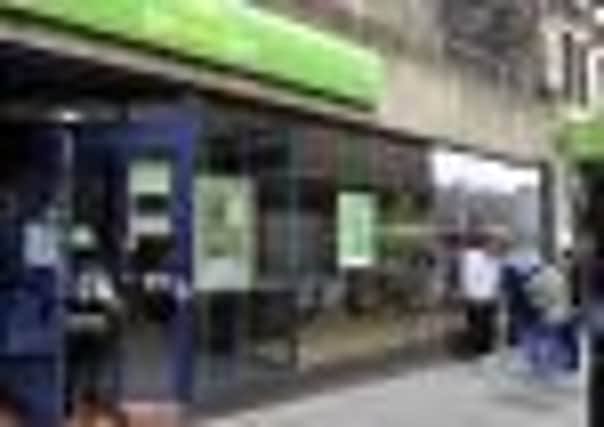Scotland’s jobless total falls by 12,000


But the fine print within the figures revealed that women continue to be the hidden victims of the slowdown, with statistics showing the female unemployment rate has now risen above that for men for the first time since the recession.
Overall, the figures from the Office for National Statistics revealed that unemployment in Scotland fell to 219,000, pushing the jobless figure of 8.1 per cent below the UK average of 8.3 per cent.
Advertisement
Hide AdAdvertisement
Hide AdThe fall was a marked surprise, following warnings by forecasters that unemployment could rise to 10 per cent by the end of this year, as the public-sector contraction continues.
First Minister Alex Salmond hailed the overall shrinking in dole queues last night. “This is the biggest fall in unemployment in Scotland for over a year, and Scotland now has lower unemployment, higher employment and lower economic inactivity than the UK as a whole,” he said. He pointed to the announcements in recent weeks, such as wind power manufacturer Gamesa’s decision to base themselves in Leith, and GlaxoSmithKline’s £100 million expansion plans for sites in Montrose and Irvine, as evidence that government action was supporting employment.
Scottish Secretary Michael Moore said: “The UK government is doing all it can to create the right conditions for businesses to create long-lasting jobs. Our policies are helping to stabilise the economy and maintain confidence as we reduce the deficit and create growth.”
The brighter picture on employment was shared across the UK, where employment rose by 53,000 in the three months to February, with unemployment falling by 35,000.
CBI deputy director-general Neil Bentley said the figures showed that the private sector was “gradually regaining confidence to hire”.
Economists said last night that, while welcome, the sudden drop could not be seen as a trend until more evidence emerged over the coming months.
Meanwhile, unions said the figures masked the growth of “under-employment”, with more and more people having to accept shorter hours or part-time work.
Jenny Stewart, head of public sector at KPMG in Scotland, said: “For the first time in the last two years, the female unemployment rate is now higher than for males.
Advertisement
Hide AdAdvertisement
Hide Ad“Two years ago, male unemployment was 9.4 per cent and it is good to see that has now fallen to 8 per cent but in the same period, female unemployment has increased from 6.2 per cent to 8.2 per cent.”
She added: “In part, this may be due to the public-sector cuts feeding through where women may be more affected – social care and public administration have all seen very significant falls in employment over the last year, but in the last quarter particularly.”
Grahame Smith, general secretary of the Scottish Trade Union Congress, said: “Rapidly rising unemployment amongst women in Scotland continues to be a major concern.
“The overall fall in unemployment in the three months to February is accounted for by a steep fall in male unemployment, with female unemployment registering yet another significant rise.
“Male unemployment fell by 10.5 per cent over the year while female unemployment increased by 19 per cent.”
Mr Smith added: “If Scotland is following the UK trend, we can also anticipate that most of the new jobs being created are part-time or self-employment.
“The increase in involuntary part-time employment continues to be the great hidden story of the labour market, post-recession.”